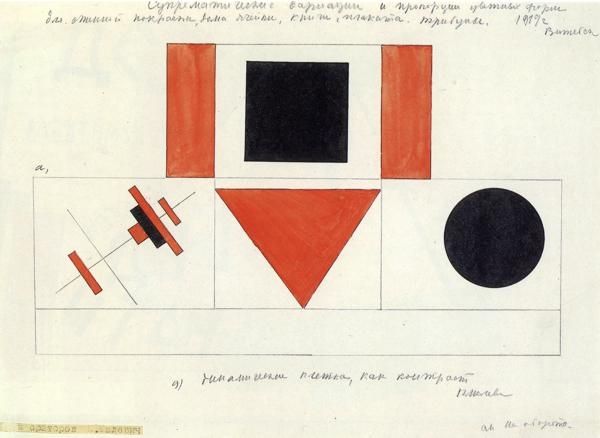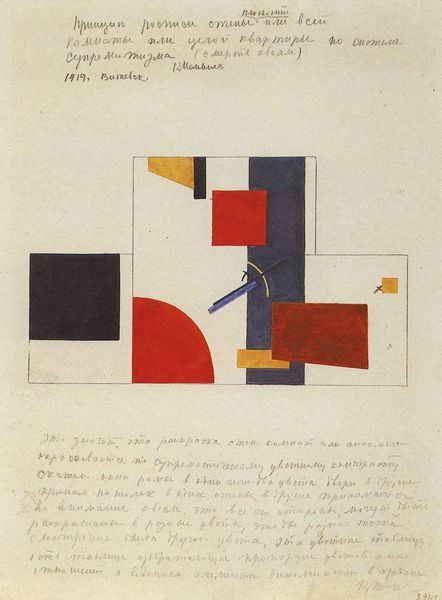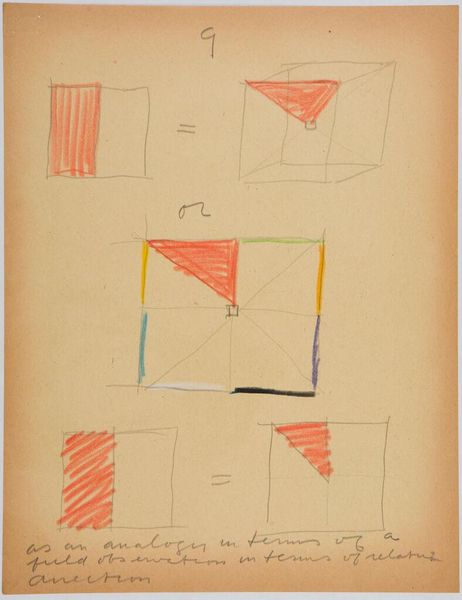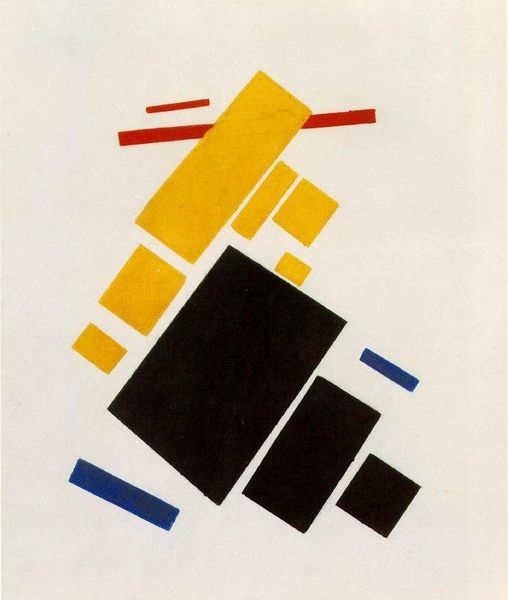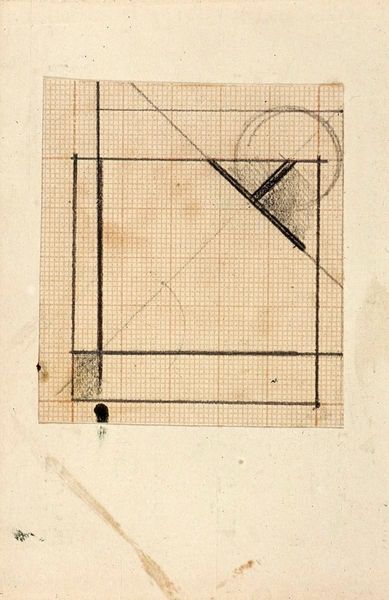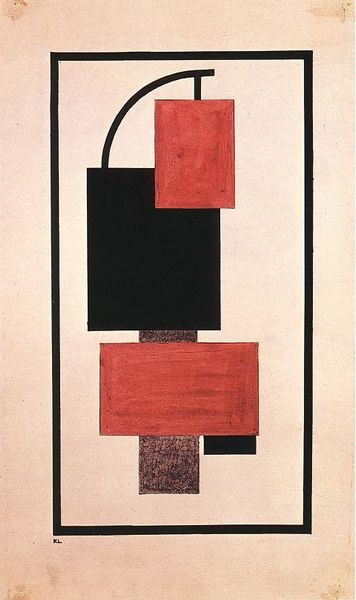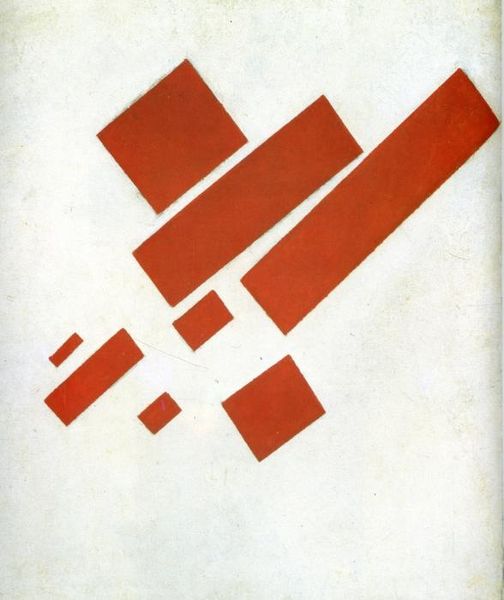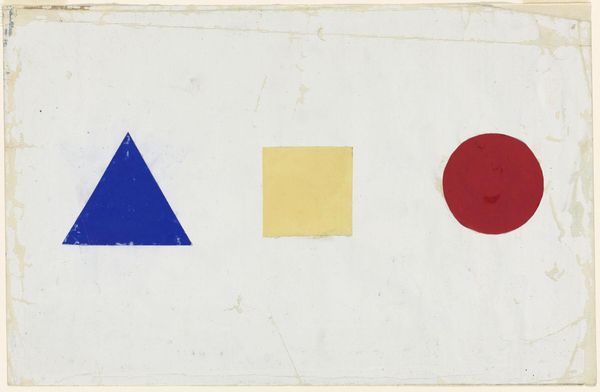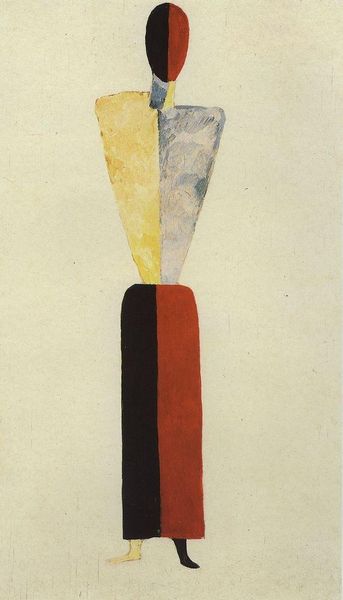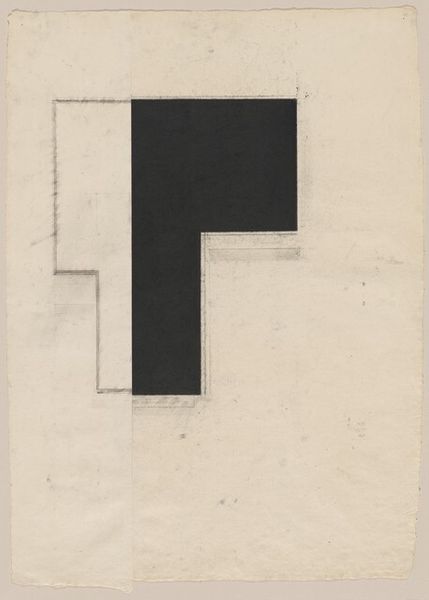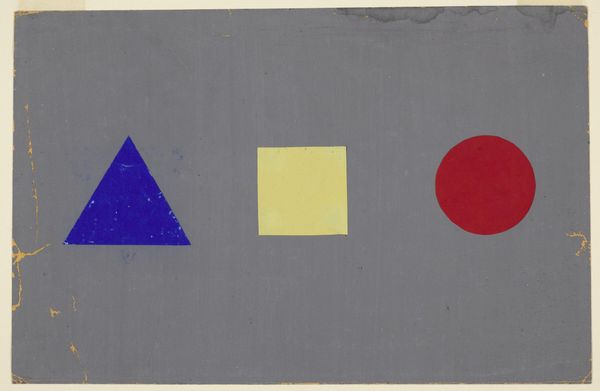
#
form
#
hand-drawn typeface
#
geometric-abstraction
#
abstraction
#
line
#
russian-avant-garde
#
suprematism
#
monochrome
Copyright: Public domain
Curator: Here we have Kazimir Malevich’s, "Tribune of Speakers," painted in 1920. What strikes you initially? Editor: The starkness. The bare canvas coupled with the crisp geometry—it's so reductive it almost feels instructional, like a diagram. Is it oil? Curator: The material reality here is simpler; it’s likely gouache and pencil on paper, underscoring its function as a study for larger works, a testing ground for Suprematist principles. Note the inscription at the top of the work—it appears to be notes written in Russian. Editor: Notes! Fascinating. So the act of sketching and figuring out is as much a part of the piece as the final arrangement? This makes me think about the labor and time—maybe hasty, maybe methodical—that Malevich invested. Curator: Precisely. The drawing itself is crucial; Malevich believed that pure geometric forms, stripped of any representational baggage, could express spiritual purity and access a higher reality. Editor: Spiritual, yes, but I also see the societal context, the utopian impulse of the Russian avant-garde. Each block could represent some kind of module to a building, the building block of something that is completely divorced of prior forms of social organisation, a blank canvas. How would this drawing be consumed? Was Malevich really interested in the masses seeing it? Curator: I think you’re right; Malevich was imagining a new visual language for a transformed society. Editor: In that case, the use of red is charged, a loaded choice of color. Not to say that the monochrome is less thought through but to make the active and conscious effort of using the other color associated with bolshevism could mean that the drawing serves as a symbol of a world reshaped by revolution. Curator: Well, considering that his ideas later faced criticism and repression under Stalinism makes it very interesting in retrospect to observe this painting! Editor: Looking closely at the lines, they have so much intentionality in the construction and what this painting lacks in layers of pigment, it adds with thought, effort and making. Curator: It does make you rethink what constitutes art, doesn't it? Editor: Indeed. It is interesting how context shapes its importance, so I invite you to ponder what exactly it meant to witness it and for how it will be received in the future.
Comments
No comments
Be the first to comment and join the conversation on the ultimate creative platform.
